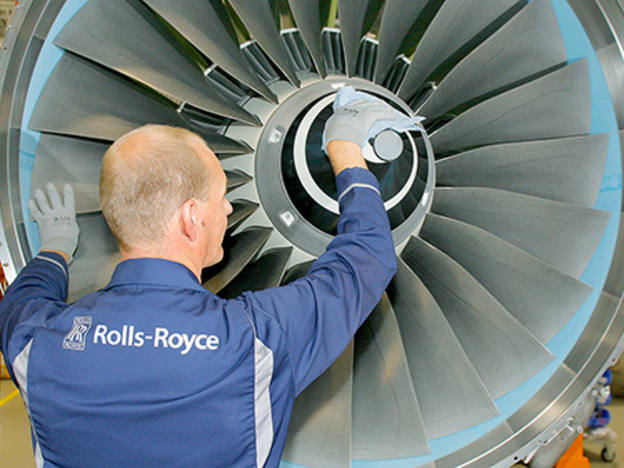
Rolls-Royce (RR.) expects its full-year operating profits and free cash flow to sit towards the bottom of its target ranges, as the costs of fixing its troubled Trent 1000 engine programme continue to plague the aerospace engineer. It has announced that its fix for the Trent 1000 TEN engine would likely be introduced in 2021, a year later than previously envisaged.
Since entering service in 2017, the TEN has been dogged by blade deterioration issues and disrupted customer airlines, forcing the grounding of two Singapore Airlines jets earlier this year. In total, there were 34 planes grounded by Rolls-Royce engine problems in 2018, up from 18 in 2017. Problems with the TEN have irritated International Consolidated Airlines (IAG), which uses the engines in some of its aircraft.
Earlier this year, FlightGlobal quoted IAG chief executive Willie Walsh describing the situation as "frustrating and annoying," and said that the group would be pursuing additional compensation from Rolls-Royce over required extra maintenance inspections. In August, Rolls-Royce subsequently warned that additional engine removals would extend the time it would take to reduce the number of aircraft grounded by the issue, expecting to take until the second quarter of 2020 to lower this to single figures. IAG declined to comment in response to Rolls-Royce’s latest announcement.
There is likely to be an exceptional charge of around £1.4bn to Rolls-Royce’s full-year operating profit, representing compensation costs and provisions against future losses on a small number of contracts, following a new estimate on their durability. Rolls has guided for full-year 2019 operating profits and free cash flow of both £700m, with room for £100m either side of these targets.
The TEN’s new blade represents the final major remedy required for the Trent programme. Rolls had planned to introduce the blade in early 2020, but following a review, it now says that “it will not deliver a sufficient level of enhanced durability and as such we are being prudent in assuming that an improved blade is unlikely to be ready before the first half of 2021”.
This will also delay the introduction of Rolls’ Trent 7000 engine, which shares much of the TEN’s design. The 7000 accounts for 1 per cent of the Rolls fleet, and the engineer does not anticipate a material financial impact resulting from the delay.
Rolls now expects total in-service cash costs of around £2.4bn across 2017 to 2023. This includes a £400m increase in estimated costs across all Trent 1000 engines, and also now includes the £400m of TEN-associated costs previously included within the group’s annual contingency for the programme. The exceptional £1.4bn charge is separate to these costs.
IC View
Rolls-Royce’s engine woes go beyond the TEN, and the Trent programme has proven both an enormous drain on resources and a terrible blow to the reputation of one of the world’s biggest aerospace engineers. The consistent delays to the end of this crisis have compounded the problem, and a reported improvement in trading since Rolls’ half year will not sway us from our rating. Sell at 756p.
Last IC View: Sell, 728p, 13 Aug 2019












